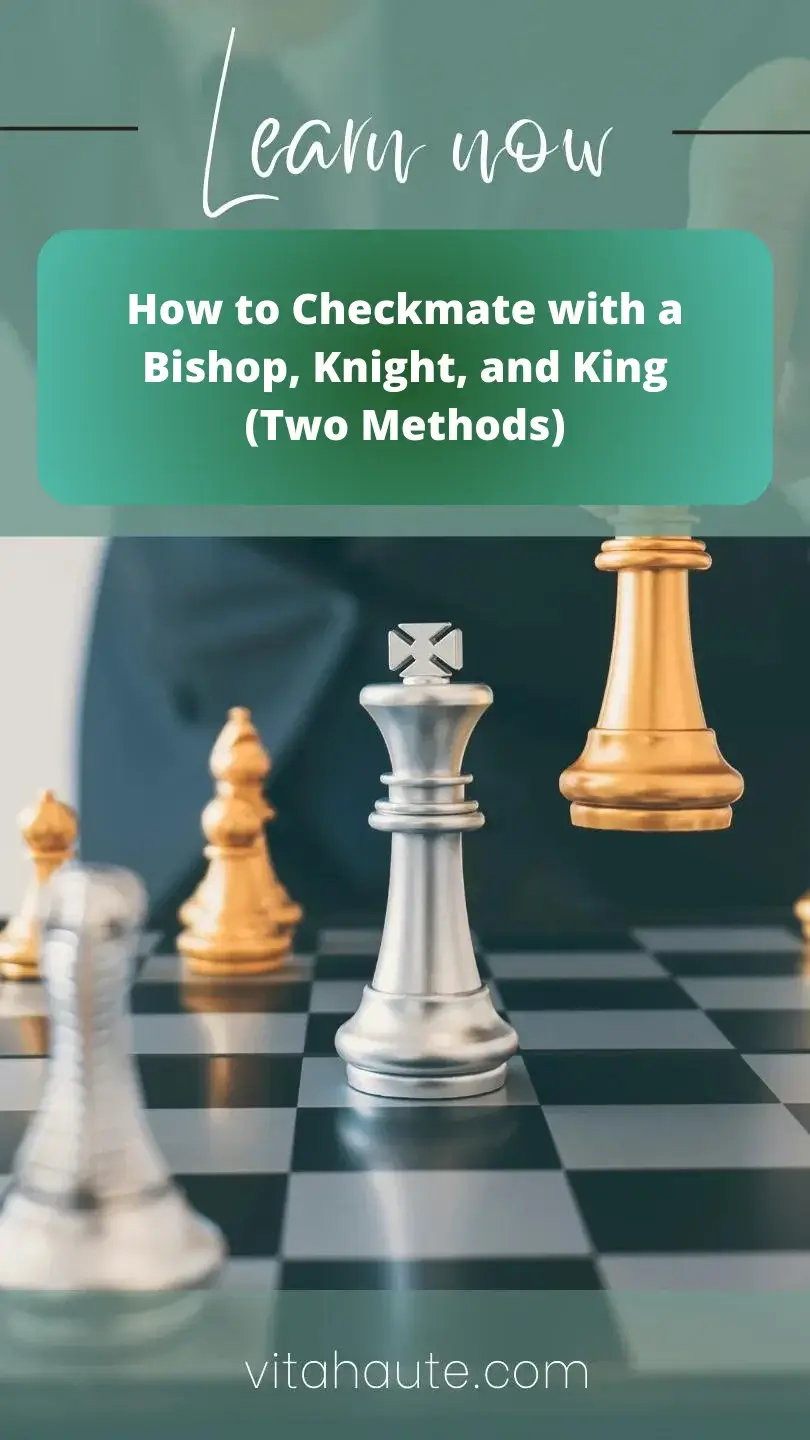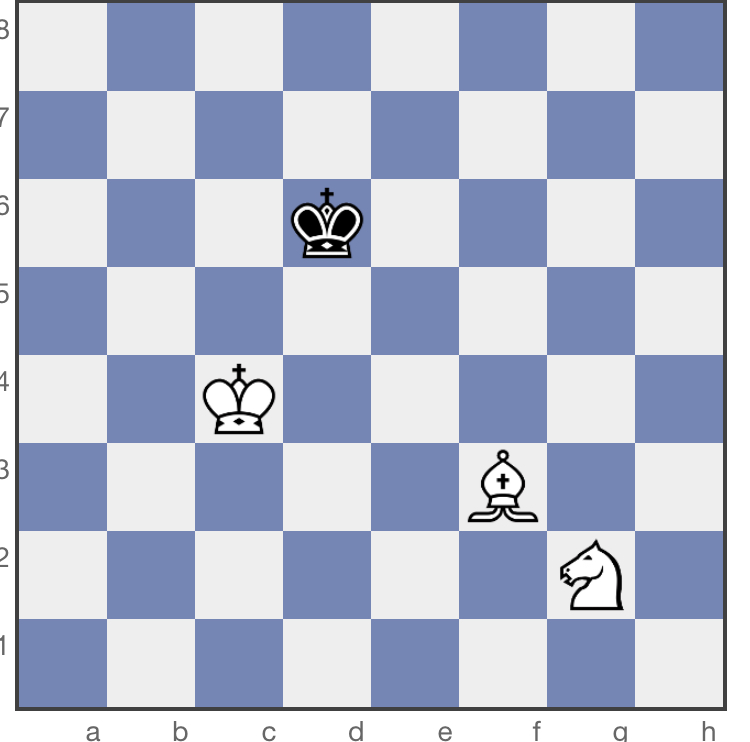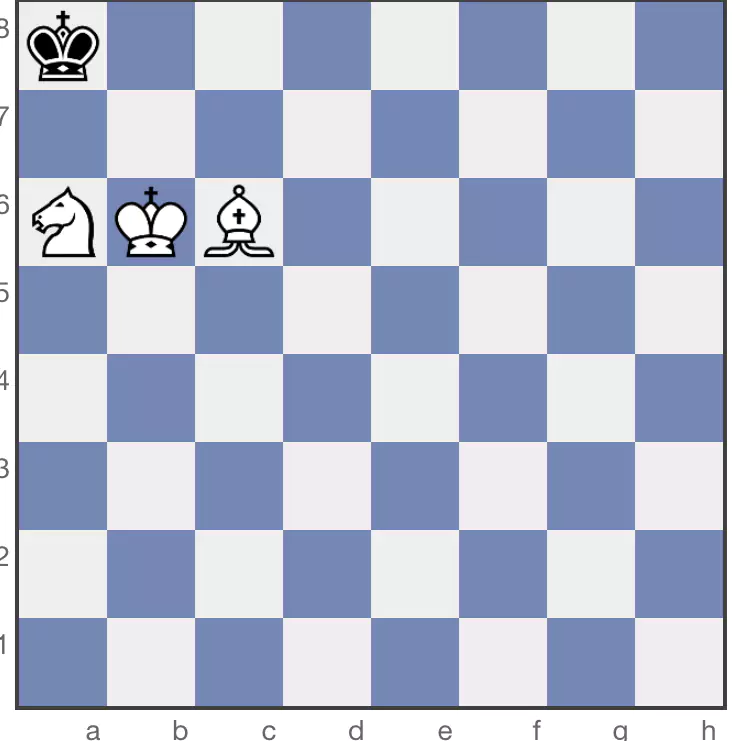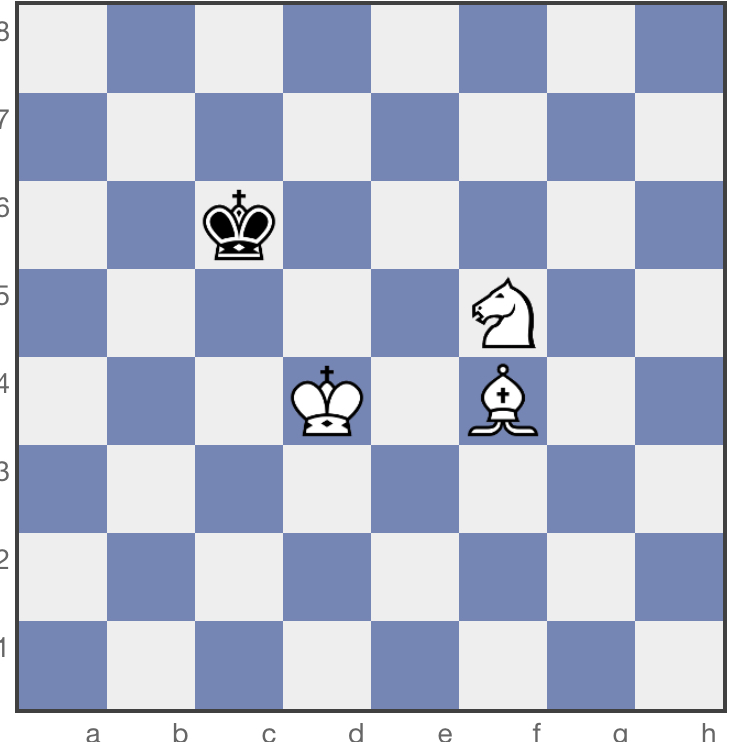Chess enthusiasts often refer to the Knight and Bishop checkmate as the “King’s Ballet” due to the intricate dance these two pieces perform as they corner the opponent’s King.
While the Bishop and Knight checkmate may be rare, it’s a testament to the depth and complexity of chess. Learning and mastering this checkmate can set you apart as a skilled and knowledgeable chess player.
In this comprehensive guide, we’ll break down the steps, techniques, and strategies required to execute this exquisite checkmate.
This post contains affiliate links. Please read our disclosure.

The Bishop and Knight checkmate is one of the most challenging checkmates to achieve in chess. It involves using the limited mobility of a Bishop and Knight together to checkmate the opponent’s King. This checkmate scenario is relatively rare and often requires precise positioning and tactics.
Learning the Bishop and Knight checkmate is essential for several reasons:
- Strategic Mastery: Understanding this complex checkmate demonstrates a high level of chess strategy and skill. It can help you become a more well-rounded and formidable chess player.
- Endgame Prowess: The Bishop and Knight checkmate typically occurs in the endgame when there are fewer pieces on the board. Mastering this checkmate can greatly improve your endgame skills.
- Practical Application: Knowing how to achieve the Bishop and Knight checkmate can be a valuable asset in practical games. Opponents may struggle to defend against it if they are unfamiliar with the technique.
- Problem-Solving: Solving the puzzle of the Bishop and Knight checkmate enhances your problem-solving abilities in chess. It requires precise calculations and foresight.
The Bishop and Knight checkmate is one of the most challenging endgames to achieve in chess. This beautiful checkmate demonstrates the harmony between the Bishop and Knight, two powerful yet intricately coordinated pieces. Two common methods to achieve this checkmate are:
The “Knight on Rim” Method
In the “Knight on Rim” method, one of your Knights is strategically positioned on the edge of the chessboard. This Knight’s role is to control crucial squares that restrict the opponent’s King’s movement. Simultaneously, your Bishop and centralized King work in harmony with the Knight.
Your Bishop supports the Knight by forming a barrier that gradually drives the opponent’s King toward the edge of the board. With careful maneuvering, you push the opponent’s King into one of the corners.
Once the King is cornered, your Bishop and Knight collaborate to control the remaining escape squares and deliver checkmate. This method requires precise coordination and calculation of your opponent’s moves.
The “Centralized King” Method
In the “Centralized King” method, your focus is on centralizing your own King. A centralized King is a powerful piece in the endgame, as it helps control key squares in the center of the board.
Your Bishop and Knight work together to form a barrier around the opponent’s King. As you advance your King closer to the center, your opponent’s King is forced toward the edge of the board. Your centralized King also supports your other pieces in controlling the board.
Ultimately, you corner the opponent’s King with the assistance of your centralized King, Bishop, and Knight. This method, like the first, requires precise coordination and calculation.
Mastering these techniques is essential for achieving the Bishop and Knight checkmate and improving your overall endgame skills in chess.
How to Practice Bishop and Knight Checkmate
The “Knight on Rim” Method:
1. Position one of your Knights on the edge of the chessboard, preferably on a corner square.

2. Use your Bishop to control key squares around your opponent’s King, gradually driving it toward the edge.
3. Advance your King closer to the center of the board to support your Bishop and Knight.
4. Continue to limit the opponent’s King’s movement while keeping it away from escaping to the central squares.
5. Once the opponent’s King is near the edge and confined to a corner, work with your Bishop and Knight to checkmate the King. The Knight typically covers escape squares, and the Bishop delivers the final check.

The “Centralized King” Method:
1. Start by centralizing your King in the middle of the board. Your King will play a crucial role in controlling central squares.

2. Use your Bishop and Knight to form a barrier around your opponent’s King, gradually pushing it toward the board’s edge.
3. Advance your King toward the center while maintaining pressure on the opponent’s King.
4. Keep your opponent’s King away from central squares and restrict its movement.
5. Finally, when your opponent’s King is cornered, coordinate your Bishop and Knight to deliver checkmate.

Further Tips for Practicing Knight and Bishop Checkmate
If you’re eager to master the Knight and Bishop checkmate, here are some valuable tips to enhance your skills:
1. Study Endgame Theory: Invest time in learning endgame principles and strategies. Understanding how to convert a material advantage into a winning endgame is crucial.
2. Practice on Real Boards: While online chess platforms are convenient, practice on physical boards as well. It improves your board vision and enhances your ability to visualize positions.
3. Solve Puzzles: Work on chess puzzles that involve the Knight and Bishop checkmate. Solving puzzles helps you recognize patterns and improve your calculation skills.
4. Master Coordination: Understand how the Knight and Bishop work together. Practice coordinating their movements efficiently to control the opponent’s King.
5. Review Grandmaster Games: Analyze games played by grandmasters where the Knight and Bishop checkmate was executed. Learn from their techniques and strategies.
Conclusion
Mastering the Knight and Bishop checkmate in chess is a true testament to your strategic prowess and dedication to the game. While achieving this checkmate may be a rare occurrence in your games, the knowledge and skills you gain from mastering it will greatly enhance your overall chess proficiency. It’s a demonstration of the intricate beauty and depth that the game of chess has to offer. As you continue to refine your chess strategy and endgame skills, remember that the Knight and Bishop checkmate is a jewel in your chess crown, a symbol of your dedication to the art of chess mastery.